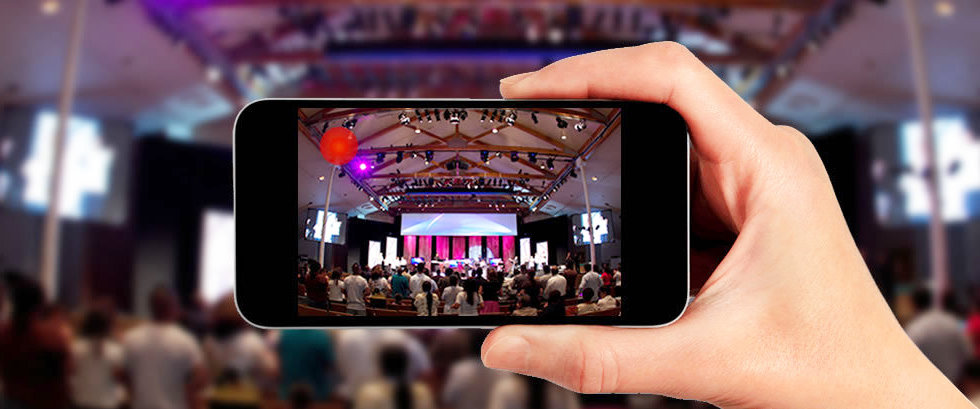Posting videos online isn’t something new these days. Teen have been sharing their and others videos on social media with the convenience of platforms like Facebook, YouTube, etc. However, most of these social media giants have been working on bringing something more raw and visceral to their users and live-streaming is how they are planning the achieve it. Facebook and Twitter already have their own live streaming services called Facebook Live and Periscope, respectively. Then, there are other companies like Meerkat who laid the foundation of live-streaming. The outreach of these apps is extensive. For example, Facebook, already has amassed a billion users, and when someone would live-stream using Facebook Live, it will be viewed by millions of users, probably.
Well, Facebook Live isn’t something designed for teens to share their personal insights to the world, rather, it’s a new business platform for companies to get up close and personal with their customers. Almost every company, big or small, is resorting to Facebook Live to telecast their promotional activities. But for kids, it’s not like that. They are prone to risks of cyberbullying, abuse and a lot more. Live streaming can expose teens to those experiences that they can never take back. But why are teens so obsessed with live streaming their lives?
Why do needs love to live stream events?
As a parent, what I have figured out is that kids definition of embracing technology is different. They think that they have to use any new service or app that may hit the App Store. It’s like keeping up with the digital trends. Kids believe if they aren’t doing this, they could be missing out on something essential.
Imagining kids live-streaming the unedited version of themselves could easily become any parent’s nightmare. But there is more to it. This oversharing that kids have been accustomed to could turn into something catastrophic to their future. Creating a communication is an appealing feature of live streaming. For some, this could mean simply connecting with their groups of friends or family, but for others, it could mean connecting to millions of people to achieve online fame.
And since everyone knows that Facebook’s live-streaming videos are given priority over other media in the newsfeed, you could see kids using this feature more often. While some of the teens share live streaming of things like hanging out with the family or putting on makeup, other are are even live-streaming violence and sexual acts which they shouldn’t meant to be.
What’s the problem with live-streaming?
The problem lies with the ethical boundaries of live-streaming which are crossed way too many times. For example, if a teen live streams a fight at school, he is giving bullies a platform to abuse the ones who were in the video. This new human experience raises a lot of questions about the ethics, privacy and intimacy of our online activities. And just because we can live-stream, does it mean we should?
According to B.J. Casey, teenagers usually make good decisions if they have been raised in a nurturing environment, but even after that, their adolescent brain is prone to poor decisions. “A teen’s brain is constantly locked in a tug-of-war between the logical pull of the prefrontal cortex and the the impulsive pull of their ventral striatum” explains Casey of the Cornell University.
There is no moderation
Whether it’s Periscope, Meerkat or Facebook Live, what’s common with the use of these apps is that the moderation comes from the users who report videos with inappropriate or violent content. But if your child has been watching these live videos, they could be exposed to unsolicited sexual content, inappropriate material and violence. This is because kids aren’t very good moderators, and it’s hard you would see them reporting something that should actually be reported. Moreover, the oblivious nature of these apps make it even more worse as no know one knows what’s going to happen next.
There are so many horrific stories of live-streaming that there is a need for revising the whole live-streaming culture. No one would would want their child to watch live streaming of a woman who killed herself. And this is happened already with the Parisian woman who streamed herself for hours before committing suicide. Ideas like self-harm and gun violence are contagious and exposing your teen to them could mean more vulnerabilities.
Why are teens fascinated with live-streaming
Live-streaming videos hold a fascinating trait—people feel that they are part of the excitement that the other entity is going through. This real-time exposure and the ability to communicate with the streamer makes it very appealing to the teens. There is a positive side to live-streaming too, because too often, we have seen people laughing or moved to tears. However, the dangers are too apparent for the teens as aforementioned and parents need to take special care of their kids live-streaming fascination.
There are huge risks associated with live-streaming, so stay on your heels when something like Facebook Live, Meerkat or Periscope appears on your chid’s phone. Monitor your teens’ apps and activity and explain to them why you need to monitor their online activity for their digital protection.
Have something to share with us? Let us know in the comments.

Comments are closed.